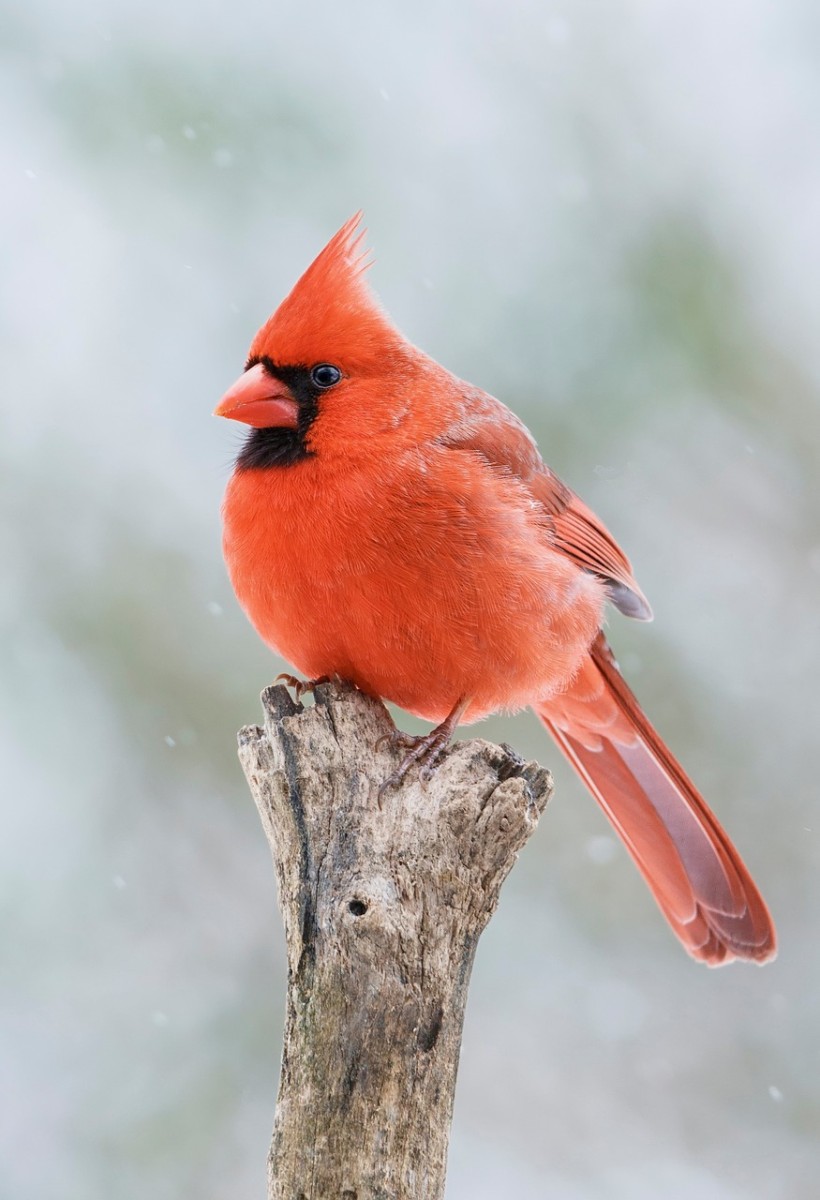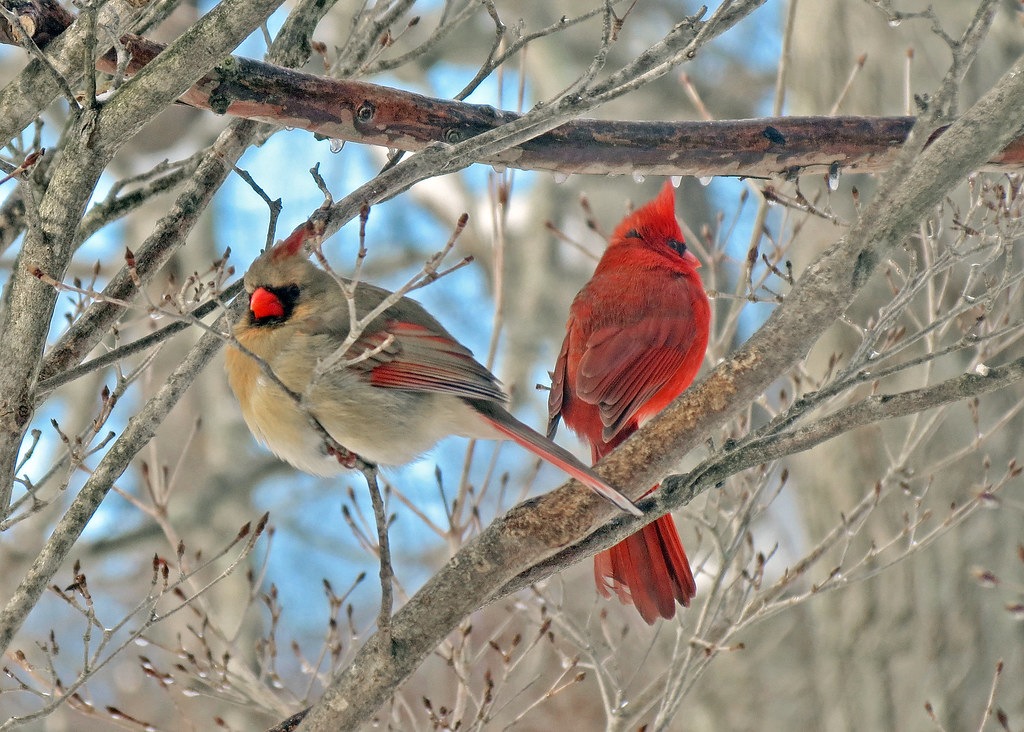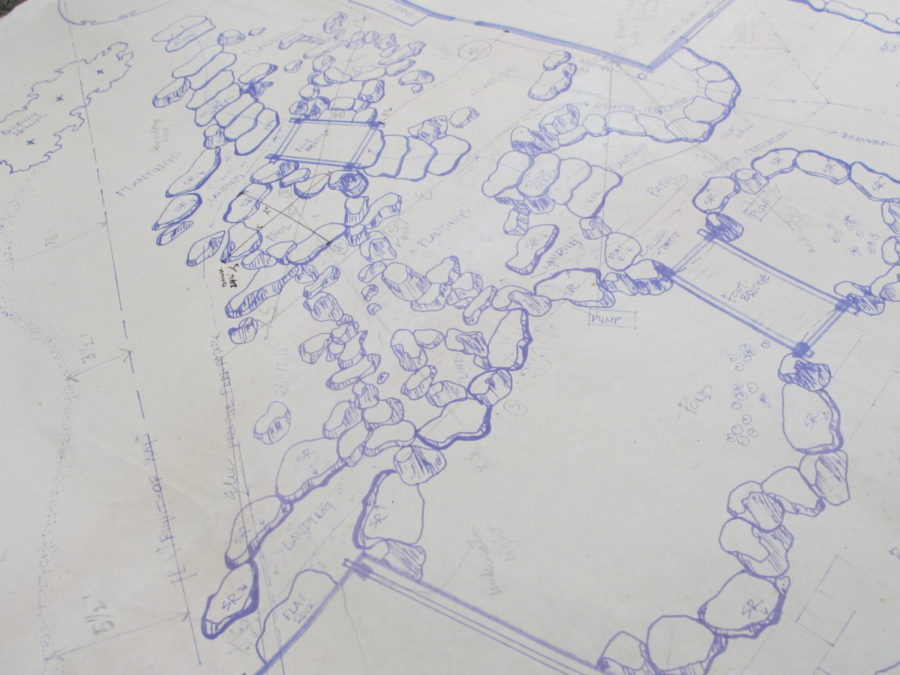Updated 1/25/2025
Welcome the Northern Cardinals
Whose heart is not warmed by the sight of brilliant red cardinals feasting at backyard feeders? Add a fresh snowfall and the birds’ familiar calls as they defend their territory, and you’ve got some delightful moments on a cold winter day. I almost wrote a “dreary winter day”, but living close to nature precludes this dismal perception; every day is a lovely day.
This commonly seen favorite songbird normally remains in the area, both winter and summer, as long as food is plentiful. Now doesn’t that just lift your spirits!

A male northern cardinal.
Where Cardinals Live
Other species of cardinals live in Central and South America, and there are many subspecies within their range. This article is about the northern cardinal, Cardinalis cardinalis, whose name derives from the red vestments worn by Catholic cardinals.
Cardinals are abundant throughout most of the United States: in the area from the Atlantic coast west to eastern Montana and eastern New Mexico, including all of Texas and parts of the deep southwest. They also live in Mexico, but not commonly in higher elevations.
Fortunately, the cardinal’s population has remained stable while the numbers of many other songbirds have decreased dramatically. Some songbirds no longer live in areas where they used to be abundant.

Female and male cardinals.
The cardinal’s range, in fact, has expanded northward, to include areas in Canada north and east of the Great Lakes. Although the cardinal has been seen in Canada for many years, it’s only since about 1980 that proof of nesting activity has taken place there. The prevalence of well-stocked feeders is considered the primary explanation for this expansion.
Border regions close to their usual ranges see cardinals settling into those areas. They’re not yet commonly found in those border regions, but populations are increasing.
Habitat
Part of the cardinal’s success lies in the species’ adaptability to various environments. They reside in woodlands, shrubby thickets, swamps, and forest edges and clearings. Northern cardinals in the desert southwest live near streams and washes, in tall brushy growth and mesquite groves.
City parks and suburban residential gardens often host these beautiful birds, as long as it’s fairly quiet. They retreat to the security of thick undergrowth if disturbed but will return soon afterward. Cardinals are usually the first to arrive and the last to leave the backyard bird feeders. When I rise, before it’s light, inevitably it is the cardinal that comes first to the feeder, unless the opossum is having a late night out.
Plant a Garden for the Birds
You can encourage birds and other wildlife to make your property their home. Contact the local Audubon Society or other birding experts and find out which plants attract birds. One option is to have a landscape plan drawn up, incorporating features that will bring in the wildlife.
The garden depicted in the blueprint below shows the hardscape for a water garden I planted in the 1990’s: paths, stonework, pond, footbridges, and the underground wiring and plumbing. This new garden replaced all the lawn on the slope with a series of 5 waterfalls and a 35′ pond, stone steps, and layered plantings all around. Over time, my clients asked me to expand the gardens and remove more lawn, incorporating plants that offered berries, seeds, perches, and protection for birds.
The year-round availability of water attracted all sorts of wildlife, including dragonflies, frogs and toads, turtles, songbirds and birds of prey, and snakes. Occasionally, the owners added inexpensive feeder goldfish, after the great blue herons had picked off the ones that couldn’t hide fast enough.
Plant a lush landscape—less grass to mow!—that provides food, water, shelter, and nesting options. Include trees (small ones if your space is limited), evergreen and deciduous shrubs, and flowers that produce edible seeds or berries. Trees planted where they can shade the house and windows from hot afternoon sun will lower your energy bills.
Native Plants
Native plant species attract insects and offer food for birds and much of the rest of the food chain. Caterpillars will eat the leaves, and that’s a good thing. Resist the temptation to spray the “bugs”, which will feed many kinds of birds, lizards, and frogs. Although adult cardinals consume primarily seeds and fruits, they feed mostly insects to their nestlings. Pesticides will harm not only the insects but also the birds and other animals that feed on them.
Group together several trees and shrubs in the landscape. Birds prefer density of growth rather than a tree here and a couple of shrubs over there. If they can quickly retreat to dense undergrowth, they’ll feel more secure in your garden.
Walk through a local botanical garden and note the native species you might be able to use in your garden. Observe how the taller species are underplanted with masses of shrubs and perennials, giving a layered and full appearance. Keep these principles in mind when landscaping your property.
State Bird
This beloved bird has achieved state bird status in Illinois, Indiana, Kentucky, North Carolina (Mother’s favorite!), Ohio, Virginia, and West Virginia. In some areas, they’re called “redbirds”.
Headings
Page 1: Welcome the Northern Cardinals, Where Cardinals Live, Habitat, Plant a Garden for the Birds (Native Plants), and State Bird
Page 2: The Cardinal’s Diet (The Problem with Seed Husks), Live Cam (links), The Yellow Northern Cardinal, Water, Growing Sunflowers, Nesting Cardinals (Sexual Dimorphism, Courtship, Longevity, The Nest and Eggs), Predators, and Bird Watching

